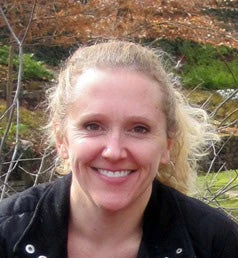In their just-released paper in Nature, Bossuroy et al. study a multi-faceted intervention aiming to reduce poverty by relaxing capital and psychosocial constraints. The study is an impressive contribution to the growing evidence on graduation or productive economic inclusion programs (whichever term you prefer). This work expands on an existing program in Niger by adding three treatment arms to the poverty-targeted monthly cash transfer program for women delivered with child development promotion activities. The treatment entailed group-savings promotion, coaching, and entrepreneurship training combined with a lump-sum cash grant (“Capital arm”), or combined with psychosocial interventions, or combined with both (“Full arm”).
This is consistent with the coaching and entrepreneurship training received: “curriculum covered fundamental micro-entrepreneurship skills, including basic accounting and management principles, market research, planning and scheduling, saving, and investing. In addition, the training focused on the choice of livelihood activities and the preparation of a basic business plan….Coaches were trained to deliver information sessions on market access… group sessions to discuss where to buy inputs for agricultural activities, how to choose suppliers, or where to sell products.”
In response to these interventions, women started businesses and generated revenue from them – even with the psychosocial interventions and no lump-sum cash grant, although the latter did have a larger impact on increases to women’s revenue. These businesses are a critical part of the study and important for improving outcomes such as food security and the like.
But what are these off-farm businesses? The paper gives scant detail, noting that women and households were “often engaging in commerce or processing agricultural products, income-generating activities or economic diversification.” Perhaps this reflects the space limitations for publishing in Nature (my last blog was also on a paper just out in Nature, just coincidence.. maybe…). Still, I would have liked at least a couple of sentences describing some basic attributes of these non-farm microenterprises. And ideally not a 10 category ISCI code which can be arguably misleading or inconsistently coded. In the Ghana Living Standards Survey 7, for example, one quarter of the almost 7,000 household enterprises are coded as manufacturing; the majority of these manufacturing enterprises are prepared food/alcohol sellers or tailors/seamstresses. And prepared food sellers were equally likely to be classified as manufacturing or the categories of wholesale/retail and accommodation/food service activities.
Why do I want to know a little bit about these important businesses? It would help to start to understand what constrains these poor households and women from operating businesses and generating revenue --important for socioeconomic wellbeing. Do they require much start-up capital, do they function mainly near or at a women’s dwelling (to take child-care needs into consideration) or in local market places, what supplies/inputs/equipment do they require and where can they procured? And what of skills levels needed…Are they year-round or seasonal? Which of them typically entail hired labor? Are they female-dominated activities or were women in Niger crossing over into male-dominated areas typically noted for higher profit potential. Looking to the bigger picture, and arguably beyond the scope of this paper, knowing even some basic details would be useful to consider their growth potential, how they might be linked with agriculture in these communities (are women processing their household’s farm output), and to what extent these businesses a part of the employment story of off-farm segments of agri-food systems (as discussed in work by Yeboah and Jayne).
I found a similar lack of detail when looking at some other well-known recent studies in this sphere. The 6-country study by Banerjee et al (2015) mentions expansion into nonfarm self-employment activities and diversification out of agriculture and livestock, with a mention of petty trade, but without any other details about businesses started. In their nine-year follow-up study of Uganda’s Youth Opportunities program, Blattman et al (2020) mention nonfarm aspects like “basic business”, “petty business”, sewing machines as a productive asset, and the earnings potential of microenterprises, but, again, without basic details of businesses. Bedoya et al (2019) study the Targeting the Ultra Poor program in Afghanistan and highlight the large effects on women’s non-agricultural businesses/self-employment enterprise, but also lacking a basic description. In their research in Sri Lanka, De Mel et al. (2012) offer some basic description, noting that the sample contains “a diverse group of the types of subsistence businesses typical in urban areas in most developing countries: small grocery stores, bicycle repairmen, food preparation (such as string hoppers and lunch packets), sewing clothing, and small-scale manufacture.”
Most likely a breakdown of the off-farm business categories in the Niger study won’t be surprising to those who have worked in the region. The team kindly shared with some of these details with me, and I did a quite unscientific and quick scan of the descriptions of business. Many (if not most) are prepared food selling (roasted peanuts, peanut oil, beignets, biscuits, kopto, soumbala) and other retail (soda, sugar, water), but also hair dressing, mat weaving, masonry, etc… While they might be described as subsistence activities (and so “low-productivity” as opposed to “opportunity enterprises” or “constrained gazelles”), they are nonetheless quite important for household economic wellbeing, as well as women’s empowerment. And saying a bit more about these activities would be a useful addition to studies that feature findings related to their start-up and income generation.


Join the Conversation